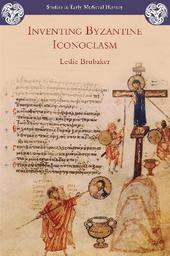
|
Inventing Byzantine Iconoclasm
Paperback / softback
Main Details
| Title |
Inventing Byzantine Iconoclasm
|
| Authors and Contributors |
By (author) Professor Leslie Brubaker
|
|
Edited by Ian Wood
|
| Series | Studies in Early Medieval History |
|---|
| Physical Properties |
| Format:Paperback / softback | | Pages:160 | | Dimensions(mm): Height 234,Width 156 |
|
| ISBN/Barcode |
9781853997501
|
| Classifications | Dewey:246.5309021 |
|---|
| Audience | | Postgraduate, Research & Scholarly | |
|---|
| Illustrations |
25 black and white illustrations
|
|
Publishing Details |
| Publisher |
Bloomsbury Publishing PLC
|
| Imprint |
Bristol Classical Press
|
| Publication Date |
22 September 2011 |
| Publication Country |
United Kingdom
|
Description
Byzantine `iconoclasm' is famous and has influenced iconoclast movements from the English Reformation and French Revolution to Taliban, but it has also been woefully misunderstood: this book shows how and why the debate about images was more complicated, and more interesting, than it has been presented in the past. It explores how icons came to be so important, who opposed them, and how the debate about images played itself out over the years between c. 680 and 850. Many widely accepted assumptions about `iconoclasm' - that it was an imperial initiative that resulted in widespread destruction of images, that the major promoters of icon veneration were monks, and that the era was one of cultural stagnation - are shown to be incorrect. Instead, the years of the image debates saw technological advances and intellectual shifts that, coupled with a growing economy, concluded with the emergence of medieval Byzantium as a strong and stable empire.
Author Biography
Leslie Brubaker is Professor of Byzantine Art and Director of the Centre for Byzantine, Ottoman and Modern Greek Studies at the University of Birmingham, UK. She is the author of Vision and Meaning in Ninth-century Byzantium (1999), co-editor of Gender and the Transformation of the Roman World, 300-900 (2003) and Byzantium in the Iconoclast Era c. 680-850: a history (2011).
|